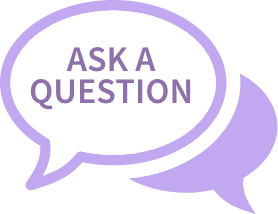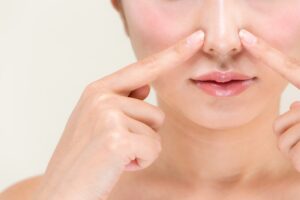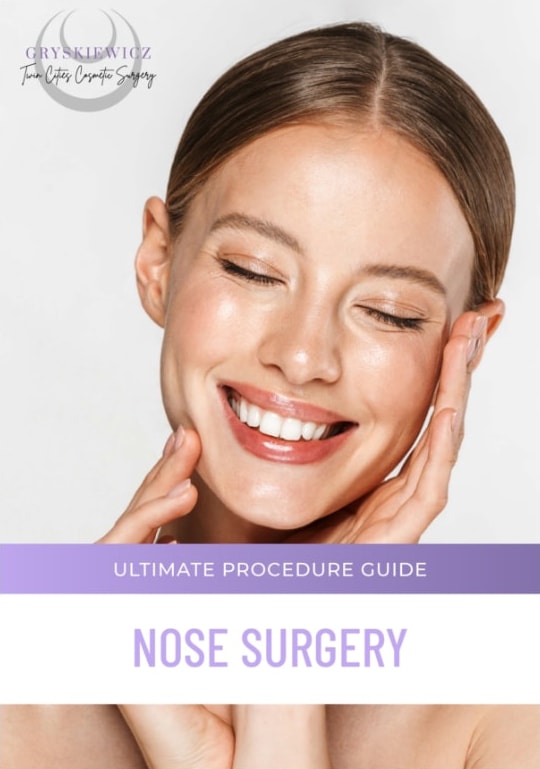Different Types of Nose Shapes
Authored by Dr. Joe Gryskiewicz
There are many different nose shapes and sizes, and every person’s nose has a range of characteristics. This article discusses how rhinoplasty can help correct the nasal shapes according to a patient’s desires. Rhinoplasty, sometimes known as a “nose job,” is a very effective surgical technique to correct nose shapes affected by different issues.
Dr. Joe Gryskiewicz is one of the most successful plastic surgeons in Minneapolis. As a board-certified plastic surgeon who specializes in aesthetics, he can help you get the nose you have always wanted. Before finding out what type of rhinoplasty you need, let’s explore the different types of nose shapes observed in men and women.
What are the Different Types of Nose Shapes?
-
Bulbous Nose
The nasal tip of a bulbous nose seems rounded and big, which often throws off the balance of other nasal characteristics and your facial harmony. To fix a bulbous nose, Dr. Joe must remove the extra cartilage, and the remaining cartilage must be precisely reshaped using sutures. Some people may have a bulbous nose due to rhinophyma, a skin disorder. The CO2 or Erbium laser might be the ideal therapy for accurate remodeling of the rhinophyma nose.
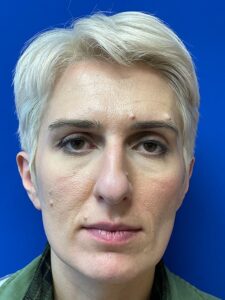
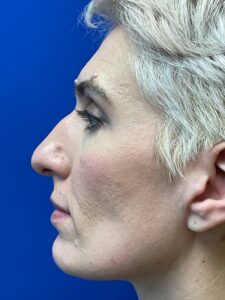
-
Upturned Nose
In this situation, the nose tip extends upwards and the nose is often tiny and upturned. In addition, a celestial or upturned nose often forms a little hollow in the center of the nose’s dorsum. When patients visit a plastic surgeon, they often ask for a nose shaped like this. An upturned nose is not a medically concerning condition. However, it would be best if you didn’t do anything surgical unless it obstructs your ability to breathe.
-
Button Nose or Snub Nose
Snub noses often have a rounder shape and an upturned component, so nostrils are more apparent from the front. The button nose, prevalent in persons with petite features of European or Asian ancestry, is particularly endearing. The tip of this kind of nose is pointy, long, and tapering. A button nose is sometimes referred to as a snub nose and has similarities with an upturned nose. Most often, patients with button noses seek a rhinoplasty to shorten the nasal tip and lengthen the nose.
-
Straight or Greek-Shaped Nose
A Greek nose is sometimes referred to as a straight nose since the main distinguishing characteristics are a straight nasal dorsum or nostrils and bridge that seem smaller. The Greek nose is one of the most visually pleasing types of noses because it has a lovely profile and is quite straight.
Patients with straight noses may believe their nose is too big or their nasal tip is too prominent. For this reason, they may want to undergo a rhinoplasty treatment to balance their facial characteristics.
-
Hawk Nose or Roman Nose
Common hawk nose shapes are similar to Roman nose shapes, but hawk noses typically have a pointier nasal tip and a thinner nasal bridge. In addition, these noses often have a noticeable curve that gives the impression of being hooked — like a hawk’s beak. Daniel Radcliffe and Adrien Brody are two examples of people who have hawk noses. However, Daniel Radcliffe’s is less prominent. A hawk nose is present in 4.9 percent of the population. Many patients consider this to be an unpleasant nose shape. However, you can straighten the nose and smooth the nasal shape through rhinoplasty.
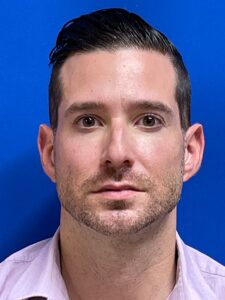
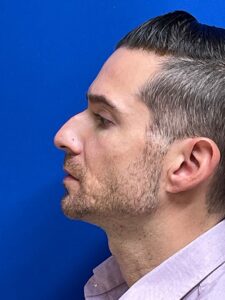
-
Roman Nose
A Roman nose features an overly pronounced nasal bridge that sometimes veers slightly near the tip. Like the Greek nose, it gets its name from characteristics seen in early Roman artworks. In addition, Roman noses are often associated with a defined, strong profile. The Roman nose is the most popular nose shape desired by male patients. Roman noses are present in around 9 percent of the population. A Roman nose may need rhinoplasty to enhance tip projection and eliminate pronounced dorsal humps on the bridge.
-
Fleshy Nose or Broad Nose
The most typical fleshy noses are broad, wide noses with a noticeable nasal protrusion. These characteristics are most often found in men. These noses can be tiny and delicate, but if they seem more fatty than bony, they are still considered fleshy. A fleshy nose is seen in over 24 percent of the population. For a broad nose, many patients choose rhinoplasty to narrow the tip and sides of the nose, increasing tip definition.
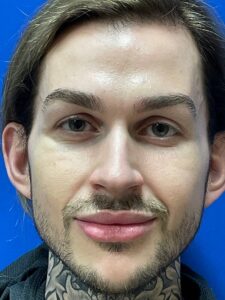
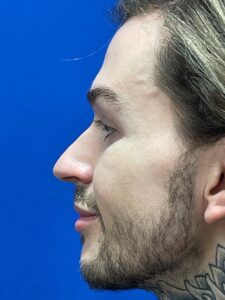
-
Nubian Nose
People of African ancestry are more likely to have Nubian nose shapes. A Nubian nose has a broad base, a long nasal bridge, and a nose tip that often extends downwards toward the lips. This nasal type’s name gives away its ancestry since it often refers to ancient North African Numidia. Rihanna and former President Barack Obama are two well-known people with noses like those of Nubians. People with a Nubian nose often want a smaller nose shape and choose to undergo rhinoplasty to achieve their ideal nasal size.
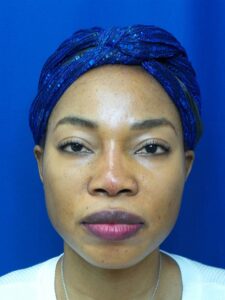
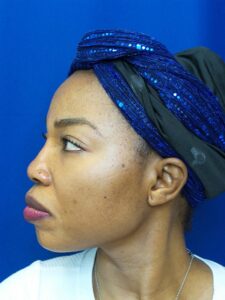
Does the Perfect Nose Exist?
The nose is a crucial component of facial attractiveness since it is the main feature of your face. According to studies, a beautiful nose shape includes a select few essential details. The definition of a beautiful nose varies, yet symmetry and proportionate balance are important components of a nose’s beauty. In addition, symmetrical faces appeal to humans. Therefore, this is the end goal of most plastic surgeries.
According to research, a woman’s ideal nose should have a “ski slope” form. However, this isn’t always feasible or desirable. It would help to consider dimensions before choosing a new nose shape. Not everyone has a nose that has the same size and shape. Based on the findings of one researcher, the most attractive noses have a certain angle between the tip and the brow.
Numerous studies on the perfect nose form include mathematical angles and proportions. In addition, several studies use computer-generated face models to determine the most appealing nose shape. In other studies, the perfect nose shape appears to be determined by the nasolabial angle or the angle between the nose and upper lip.
While views on what constitutes a lovely nose may vary, balanced dimensions and symmetry remain the generally acknowledged criteria. In nose surgeries, the goal is to create symmetry since symmetrical faces inherently attract people.
Plastic surgeons evaluate facial symmetry by visually splitting the face into three. The upper third of the face is made up of the top of the forehead to the eyebrows. The middle third comprises the area between the eyebrows and the bottom of the nose, while the lower third includes the region between the nose’s base and the chin’s bottom.
When the nose is precisely positioned in the center of the face, vertical symmetry is attained. The horizontal placement of the nose is analyzed using the same symmetry metric. The optimal nasal width equals the person’s eye width when breaking facial proportions into fifths.
Can the Shape of the Nose Be Changed?
The most efficient way to change the size and shape of the nose is with the help of rhinoplasty. With cutting-edge surgical methods, skilled nose surgeons who have years of expertise help patients obtain the best nose shape. However, as with any cosmetic procedure, it’s essential to have reasonable expectations about what your rhinoplasty can accomplish.
Non-surgical rhinoplasty often tests whether people are happy with their new form, producing effects lasting no longer than 18 months. The treatment might contour the nose and increase volume in certain places. Once satisfied, they might have a surgical rhinoplasty performed for a long-lasting and permanent solution.
Is Rhinoplasty a Complex Procedure?
Despite its widespread use, rhinoplasty is a complex procedure associated with certain risks and complications. The surgical procedure for reshaping the nose is refined to provide results that seem natural and facilitate a quick recovery. When a qualified plastic surgeon such as Dr. Joe performs rhinoplasty, the facial plastic surgery procedure becomes a safe treatment that can make you feel much better about your looks.
Most men and women consider rhinoplasty because they dislike some element of their nose. In addition to producing exceptional visual results, rhinoplasty surgery may also enhance a person’s nasal function (breathing). Whether you need a nose job for aesthetic or medical reasons, it is a very sophisticated, sensitive process that calls for substantial surgical skill.
What to Consider Before a Rhinoplasty Procedure
Making an emotional commitment to your new look is necessary. Having rhinoplasty is something that many people consider. You should know that the appropriate time is essential, but also take these factors into account:
- Teenagers thinking about getting rhinoplasty should be 14 years or older for young women, and 16 years or older for young men due to physical development and facial growth. For the best results, the nose shouldn’t undergo corrections before complete formation.
- Candidates must make their own decision to undergo surgery.
- Any form of cosmetic operation requires patients to have reasonable expectations.
- Get ready. Do your research, understand the treatment, examine photographs of genuine patients, and choose the best plastic surgeon. Surgery for rhinoplasty is different from other cosmetic treatments and calls for a particular skillset of surgical expertise.
What to Expect After the Rhinoplasty Procedure
After a rhinoplasty, your nose will have bandages. To protect and assist you in maintaining the new shape of your nose, you could wear a plaster or plastic splint. In addition, you may have a “nasal drip pad” beneath your nostrils to catch any blood that may leak from your nose.
Dr. Joe will demonstrate how to switch out the pad as necessary. Your nose will not be packed, but may have soft absorbable material to stop the bleeding and swelling. After surgery, placement of the nasal drip pad can be stopped within two days. Within a week, the surgeon will remove the external splint too. Expect to get dark eye bruises (50 percent) and a puffy nose (100 percent). In three to four weeks, most of the swelling should be gone. Your nose might hurt a little, and you might get an occasional headache.
You can get a stuffy nose and have temporary breathing difficulties. In addition, your nasal tip can be numb. As the sensation returns, you can experience some tingling. This is good. You must avoid harming your nose for around three weeks if the operation affected any of your bones. It always takes one to two years until the final results of rhinoplasty are fully visible, but you will look much better the minute the splint is removed on post-op day seven.
FAQs About Types of Noses and Rhinoplasty
Will I feel a lot of pain after rhinoplasty?
Especially when there is no nasal packing, there is often minimal discomfort after rhinoplasty. However, you might experience bruising and swelling that develops after surgery.
What’s the most attractive type of nose for women?
A woman’s most attractive type of nose is the upturned or celestial nose. This feminine nose is elegant, gentle, angelic, and slender. It flows smoothly from the eyes to the tip, where it softly twists upward with an outward curvature ending in a soft tip defining point (TDP).
How long does recovery after rhinoplasty last?
Recovery depends on how complicated the rhinoplasty procedure is. Healing will vary. The anesthesia’s effects will last for a few hours. After that, you’ll have some splints and bandages fastened to your cheek. Bruising and swelling will reach their peak within seven days. After one week of surgery, the surgeon will take out the nasal dressings, stitches, and splints.
Further Reading About Face Procedures at TCPS
- Liquid Rhinoplasty
- Facelift Surgery
- Neck Lift Surgery
- Injectables
- Facial Liposuction Procedure
- Blepharoplasty Surgery
- Rhinoplasty Gallery
Medical References About Nose Shapes and Rhinoplasty
